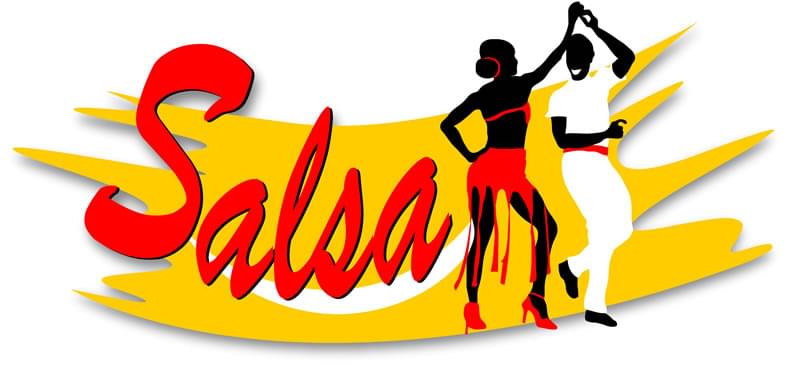Guide to caribbean dances

In recent years i’ve been learning many kinds of dances, standard, latin but i feel the caribbean dances are closest to me.
There’s no better thing when someone find that activity in what can be a passion in life. It’s a cheerful feeling to move a good fiery rythim music especially if we have a good dance partner and we can know movements in itermediate level at least.
We need lot of practice to get there. But in exchange to tiring work we get exciting experience and it’s a good feeling to see the result.
Don’t forget: dance is not only a movement but the feeling of life!
I give an insight to the most famous caribbean dances in our country. And someone who haven’t decided get some help what kind of dances can try.
Beside the short descriptions of dances i attached a few teaser videos from my favourites.
I suggest we need to start learning with cuban salsa because this dance is the most easy to learn, the most popular here and after we can learn easier the others.
Many dance schools and clubs are here, we can go to workshops, we can practice at dance nights. In Budapest and other larger cities we can find an oppurtunity almost every day.
Cuban salsa
Salsa originally means spicy sauce. This piquant, nice feeling is characterized the salsa music and dance as well.
This cheerful folk dance of Cuba comes from Son. The songs are usually spanish. In the orchestra there are many rhythm and percussion instruments.
It has many step variations and if we know more and more new movements, the joy of dance is improving. We can decorate our dance with many rotations and little nice movements. It gives enjoyable sight from outside. At the teaching is important to improve the characteristic, nice moves and the movement culture.
Cubans who live in Hungary started to teach this dance first. Beside many schools and parties are famous the original latin-american clubs too.
Los Angeles salsa style
It’s different from Cuban style because here the boy leads the girl on a line. It’s a kind of show dance, there are more acrobatic style elements and it’s elegant. In the instrumentation there are lot of wind insrtuments and piano and other solos of instruments.
New York salsa style
Also is a linear danced salsa. It’s different from Los Angeles style because the dancers start the step to the second beat like in the classical mambo. Quick pirouettes and sophisticated leg technology are there. It’s similar to Puerto Rican salsa, but it’s not so famous here.
Colombian salsa is unknown here, it’s totally different than others. Fiery and elegant with ultra-fast footwork.
Rueda (Rueda de casino)
This is the popular circle dance of salsa dancers which based on the basic cuban movements, therefore it gives success to beginners. The pairs are in a circle and the teacher leads the figures with a sound and hand sign. The couples are changing and moving around.
Merengue
It’s origin in Haiti and Dominica, comes from the black slaves circle dance. It’s cheerful dance with fast-pased small steps and many turnings. And it characterized by hip movements. The music is pulsating.
Bachata
It’s a dominican folk dance. In the origin the many footworks are very important and also the special, fast, small step combinations. Later in America and Europe it formed other styles too for example dominikai bachata, bachatango, bachata moderna, bachacha, black bachata. It’s a relaxed paced dance. The basic movements are easily learned. It’s most famous features are the strong and pnctual hip lifting in the end of the rhytm and the billowy body moving. The couple is close to each other, so it’s intim and sensual. It’s music is softer than salsa’s and the guitar is very important in that.
bachata
bachatango
dominikai bachata
black bachata
Semba
It’s a couple dance. The hand leading is important too beside body leading. The dancers are close to each other and beside the constantly walking they motive their dances with many tricks, cheerful and surprising movements. It’s music is the firey, traditional Angolan music.
Kizomba
t’s relatively a young dance but already it has more styles (for example taraxa, kuduro, passada). It comes from Semba but it was influenced by other Angolan folkloric elements. It’s step movement technic is afro and it’s leading technic is similar to Argentin tango. The dancers are dancing with tight torso, slightly bent knees and loose hip. It’s a passioate, intim dance. The couple is very close to each other. It’s music is the traditional Zouk mixed with african music.
Zouk
Zouk comes from Haiti, Martinique, and the dance of Lambada. It has more styles, for example Zouk moderno, the faster Lambazouk, the slower Zouk Love but the most famous is the brazilian Zouk. I prefer it because that is the most varied danced style: we can dance close to each other but it has also big movements. The man leads the girl with his whole body. The movements are lively and the head circles are important for girls. Emotional, pasionate and creatice dance so it’s a self-expression to the dancer and an aesthetic experiance to the viewer. It’s music is also varied, the rhytm of the slow-quick-quick-slow and it’s also pronounced in the music. In the French area it is popular too so it’s music beside Portuguese is often French but we can dance it to the lately popular English language songs too.
Samba de Gafieria
It’s an authentic brazilian dance, elegant and creative, it is full of vitality, playful with freshness. It based on the rhythm of Semba with a little bit of Salsa and Tangó beside the carnival Samba.
Reggaeton
It is based on Panamanian reggae with dancehall and Latin-American style. Dynamic, improvisational dance with many waves and hip movements. It can be danced alone it is good for acrobatic choreographies too.
Lady’s style, Man style
These lessons are held in separate to male and female dancers. Its goal is that in the caribbean dances at solo parts – when the couple is dancing alone for a little time – they not just use the basic steps but learn to motivate steps with hand and leg movements. Beside that it can be makes the dance nicer if we know the motivate things and we can variate our dance depending on the music and the leading of the partner.
I WISH EFFECTIVE LEARNING AND HAVING FUN!
Sources
Enge, N. : A List of Social Dances
Wright, J.: Social Dance – Steps to Success
Luker, K.: Salsa Dancing into the Social Sciences
Kassing, G.: History of dance
2020. április 15.



Hozzászólások nem lehetségesek.